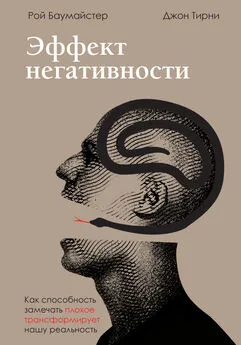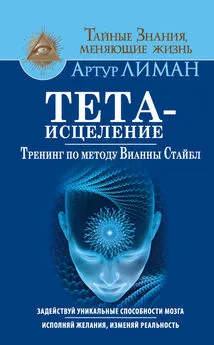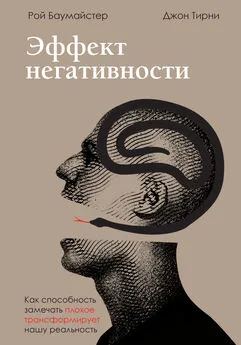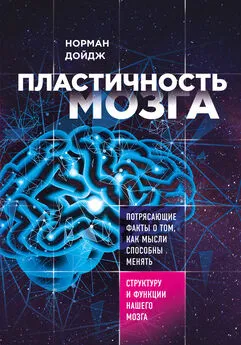Джон Тирни - Эффект негативности. Как способность замечать плохое трансформирует нашу реальность
- Название:Эффект негативности. Как способность замечать плохое трансформирует нашу реальность
- Автор:
- Жанр:
- Издательство:Литагент 5 редакция «БОМБОРА»
- Год:2021
- Город:Москва
- ISBN:978-5-04-117523-8
- Рейтинг:
- Избранное:Добавить в избранное
-
Отзывы:
-
Ваша оценка:
Джон Тирни - Эффект негативности. Как способность замечать плохое трансформирует нашу реальность краткое содержание
В основе большинства отрицательных событий лежит эффект негативности. Он вынуждает людей принимать неверные решения, чем разрушает их жизнь!
Авторы бестселлера «Сила воли», известный социальный психолог Рой Баумайстер и редактор City Journal Джон Тирни, провели масштабное исследование человеческой способности видеть плохое и не замечать хорошее. Они вывели ряд закономерностей эффекта негативности и определили стратегии борьбы с ним.
Из этой книги вы узнаете:
• почему наказание намного эффективнее награды,
• как заставить работать рациональную часть мозга и сдерживать негатив в личной и общественной жизни,
• как научиться извлекать пользу из плохих событий,
• как осознанно подавлять импульсы, которые вызывают парализующую неуверенность, панические атаки и фобии.
Эффект негативности. Как способность замечать плохое трансформирует нашу реальность - читать онлайн бесплатно ознакомительный отрывок
Интервал:
Закладка:
181 полдюжины европейцев:S. Van Goozen and N. H. Frijda, «Emotion Words Used in Six European Countries,» European Journal of Social Psychology 23 (1993): 89–95.
181 просмотрели словари: J. R. Averill, «On the Paucity of Positive Emotions,» in Advances in the Study of Communication and Affect, vol. 6, ed. K. Blankstein, P. Pliner, and J. Polivy (New York: Plenum, 1980), 745, and J. A. Russell, «Culture and the Categorization of Emotions,» Psychological Bulletin 110 (1991): 426–50, https://dx.doi.org/10.1037/0033–2909.110.3.426.
181 подсчитать слова: T. Bontranger, «The Development of Word Frequency Lists Prior to the 1944 Thorndike-Lorge List,» Reading Psychology 12 (1991): 91–116; R. B. Zajonc, «Attitudinal Effects of Mere Exposure,» Journal of Personality and Social Psychology 9 (1968): 1–27; and E. L. Thorndike and I. Lorge, The Teacher’s Wordbook of 30,000 Words (New York: Teachers College, Columbia University, 1944).
182 в 1969 работу: J. Boucher and C. E. Osgood, «The Pollyanna Hypothesis,» Journal of Verbal Learning and Verbal Behavior 8 (1969): 1–8.
182 поллианнаизм снова стал править: I. M. Kloumann, C. M. Danforth, K. D. Harris, C. A. Bliss, and P. S. Dodds, «Positivity of the English Language,» PLoS ONE 7 (2012): e29484, https://doi.org/10.1371/journal.pone.0029484. См. также исследования, использовавшее поисковик Google, чтобы определить частоту позитивного уклона в эмоциональных словах на английских, немецких и испанских сайтах:: D. Garcia, A. Garas, and F. Schweitzer, «Positive Words Carry Less Information Than Negative Words,» EPJ Data Science 1 (2012): 3, https://arxiv.org/abs/1110.4123.
182 под названием гедонометр: https://hedonometer.org/index.html.
182 на десяти языках:P. S. Dodds et al., «Human Language Reveals a Universal Positivity Bias,» Proceedings of the National Academy of Sciences 19 112 (2015): 2389–94, https://doi.org/10.1073/pnas.1411678112, and J. Tierney, «According to the Words, the News Is Actually Good,» New York Times, February 23, 2015, https://www.nytimes.com/2015/02/24/science/why-we-all-sound-like-pollyannas.html.
183 Если сегодня плохой день: K. Sheldon, R. Ryan, and H. Reis, «What Makes for a Good Day? Competence and Autonomy in the Day and in the Person,» Personality and Social Psychology Bulletin 22 (1996): 1270–79.
183 говорить о них будут дольше: A. Abele, «Thinking About Thinking: Causal, Evaluative and Finalistic Cognitions About Social Situations,» European Journal of Social Psychology 15 (1985): 315–32.
183 меняя с помощью компьютера выражение лиц: J. Golle, F. W. Mast, and J. S. Lobmaier, «Something to Smile About: The Interrelationship Between Attractiveness and Emotional Expression,» Cognition and Emotion 28 (2014): 298–310.
184 получали больше пользователей: C. J. Hutto, S. Yardi, and E. Gilbert, «A Longitudinal Study of Follow Predictors on Twitter,» in Proceedings of the SIGCHI Conference on Human Factors in Computing Systems (CHI ’13) (New York: ACM, 2013), 821–30, https://doi.org/10.1145/2470654.2470771.
184 останавливались на хороших темах: E. Ferrara and Z. Yang, «Measuring Emotional Contagion in Social Media,» PLoS ONE 10 (2015): e0142390, https://doi.org/10.1371/journal.pone.0142390.
184 распространенными: E. Ferrara and Z. Yang, «Quantifying the Effect of Sentiment on Information Diffusion in Social Media,» PeerJ Computer Science 1 (2015): e26, https://doi.org/10.7717/peerj-cs.26.
184 Британское Королевское Общество:Royal Society for Public Health, «#StatusOfMind: Social Media and Young People’s Mental Health and Wellbeing,» London, 2017, https://www.rsph.org.uk/uploads/assets/uploaded/62be270a-a55f-4719-ad668c2ec7a74c2a.pdf.
184 время на YouTube:DMR, «160 Amazing YouTube Statistics and Facts,» December 2018, https://expandedramblings.com/index.php/youtube-statistics/.
185 страх комиксов: F. Wertham, Seduction of the Innocent (New York: Rinehart, 1954); F. Wertham, «Comic Books – Blueprints for Delinquency,» Reader’s Digest, May 1954, 24–29; C. Tilley, «Seducing the Innocent: Fredric Wertham and the Falsifications That Helped Condemn Comics,» Information & Culture 47 (2012): 383–413, doi:10.1353/lac.2012.0024, and D. Hajdu, The Ten-Cent Plague: The Great Comic-Book Scare and How It Changed America (New York: Farrar, Straus and Giroux, 2008), 8.
186 более близкие отношения: K. Hampton, L. Sessions Goulet, and K. Purcell, «Social Networking Sites and Our Lives,» Pew Research Center, June 16, 2011, http://www.pewinternet.org/2011/06/16/social-networking-sites-and-our-lives/.
186 получают психологическую выгоду: E. M. Seabrook, M. L. Kern, and N. S. Rickard, «Social Networking Sites, Depression, and Anxiety: A Systematic Review,» JMIR Mental Health 3 (2016): e50, https://doi.org/10.2196/mental5842.
186 приводят к депрессии: J. Davila et al., «Frequency and Quality of Social Networking Among Young Adults: Associations with Depressive Symptoms, Rumination, and Corumination,» Psychology of Popular Media Culture 1 (2012): 72–86.
186 психологическим и поведенческим проблемам: C. Berryman, C. J. Ferguson, and C. Negy, «Social Media Use and Mental Health Among Young Adults,» Psychiatric Quarterly 89 (2018): 307–14, and C. J. Ferguson, «Everything in Moderation: Moderate Use of Screens Unassociated with Child Behavior Problems,» Psychiatric Quarterly 88 (2017): 797–805.
186 уже страдающие от неуверенности: B. A. Feinstein et al., «Negative Social Comparison on Facebook and Depressive Symptoms: Rumination as a Mechanism,» Psychology of Popular Media Culture 2 (2013): 161–70, https://dx.doi.org/10.1037/a0033111.
186 ознакомившись с исследованиями соцсетей: C. J. Ferguson, «The Devil Wears Stata: Thin-Ideal Media’s Minimal Contribution to Our Understanding of Body Dissatisfaction and Eating Disorders,» Archives of Scientific Psychology 6 (2018): 70–79.
186 метаанализ исследований:C. J. Ferguson, «In the Eye of the Beholder: Thin-Ideal Media Affects Some, but Not Most, Viewers in a Meta-analytic Review of Body Dissatisfaction in Women and Men,» Psychology of Popular Media Culture 2 (2013): 20–37.
186 социальные нормы в интернете: E. M. Bryant and J. Marmo, «The Rules of Facebook Friendship: A Two-Stage Examination of Interaction Rules in Close, Casual, and Acquaintance Friendships,» Journal of Social and Personal Relationships 29 (2012): 1013–35.
186 чувства пользователей: L. Reinecke and S. Trepte, «Authenticity and Well-Being on Social Network Sites: A Two-Wave Longitudinal Study on the Effects of Online Authenticity and the Positivity Bias in SNS Communication,» Computers in Human Behavior 30 (2014): 95–102, and N. N. Bazarova, «Public Intimacy: Disclosure Interpretation and Social Judgments on Facebook,» Journal of Communication 62 (2012): 815–32.
187 список самых пересылаемых статей: J. A. Berger and K. L. Milkman, «What Makes Online Content Viral?» December 5, 2009, https://ssrn.com/abstract=1528077 or https://dx.doi.org/10.2139/ssrn.1528077.
187 измеряющим социальную шумиху: E. B. Falk, S. A. Morelli, B. L. Welborn, K. Dambacher, and M. D. Lieberman, «Creating Buzz: The Neural Correlates of Effective Message Propagation,» Psychological Science 24 (2013): 1234–42.
187 «пишут ужасные»:интервью с Питером Шердином Доддсом, цитируемое в J. Tierney, «According to the Words, the News Is Actually Good,» New York Times, February 23, 2015, https://www.nytimes.com/2015/02/24/science/why-we-all-sound-like-pollyannas.html.
188 учебники по психологии посвятили: R. F. Baumeister, C. Finkenauer, and K. D. Vohs, «Bad Is Stronger Than Good,» Review of General Psychology 5 (2001): 324.
188 исследование в 1978: P. Brickman, D. Coates, and R. Janoff-Bulman, «Lottery Winners and Accident Victims: Is Happiness Relative?» Journal of Personality and Social Psychology 36 (1978): 917–27.
189 победители лотереи в Британии:B. Apouey and A. E. Clark, «Winning Big but Feeling No Better? The Effect of Lottery Prizes on Physical and Mental Health,» Health Economics 24 (2015): 516–38, and J. Gardner and A. J. Oswald, «Money and Mental Wellbeing: A Longitudinal Study of Medium-Sized Lottery Wins,» Journal of Health Economics 26 (2007): 49–60. See also A. Hedenus, «At the End of the Rainbow: Post-Winning Life Among Swedish Lottery Winners» (Ph.D. diss., University of Gothenburg, 2011), and J. Tierney, «How to Win the Lottery (Happily),» New York Times, May 27, 2014.
190 психологи Ричард Тедески и Лоуренс Калхоун: R. G. Tedeschi and L. G. Calhoun, «The Posttraumatic Growth Inventory: Measuring the Positive Legacy of Trauma,» Journal of Traumatic Stress 9 (1996): 455–71, and R. G. Tedeschi and L. G. Calhoun, «Posttraumatic Growth: Conceptual Foundations and Empirical Evidence,» Psychological Inquiry 15 (2004): 1–18.
191 « уклон исчезающего аффекта»: J. J. Skowronski, W. R. Walker, D. X. Henderson, and G. D. Bond, «The Fading Affect Bias: Its History, Its Implications, and Its Future,» Advances in Experimental Social Psychology 49 (2014): 163–218.
192 Плохие воспоминания: J. D. Green, C. Sedikides, and A. P. Gregg, «Forgotten but Not Gone: The Recall and Recognition of Self-Threatening Memories,» Journal of Experimental and Social Psychology 44 (2008): 547–61, and J. D. Green, B. Pinter, and C. Sedikides, «Mnemic Neglect and Self-Threat: Trait Modifiability Moderates Self-Protection,» European Journal of Social Psychology 35 (2005): 225–35.
192 игроки делали свои ставки: T. Gilovich, «Biased Evaluation and Persistence in Gambling,» Journal of Personality and Social Psychology 44 (1983): 1110–26.
194 Этот «эффект позитивности»: M. Mather and L. L. Carstensen, «Aging and Motivated Cognition: The Positivity Effect in Attention and Memory,» Trends in Cognitive Sciences 9 (2005): 496–502, and A. E. Reed and L. L. Carstensen, «The Theory Behind the Age-Related Positivity Effect,» Frontiers in Psychology 3 (2012): 339.
194 эксперимент в Германии:S. Brassen, M. Gamer, J. Peters, S. Gluth, and C. Büchel, «Don’t Look Back in Anger! Responsiveness to Missed Chances in Successful and Nonsuccessful Aging,» Science 336 (2012): 612–14.
Читать дальшеИнтервал:
Закладка:




![Медина Мирай - Зазеркалье Нашей Реальности [litres]](/books/1143348/medina-miraj-zazerkale-nashej-realnosti-litres.webp)





